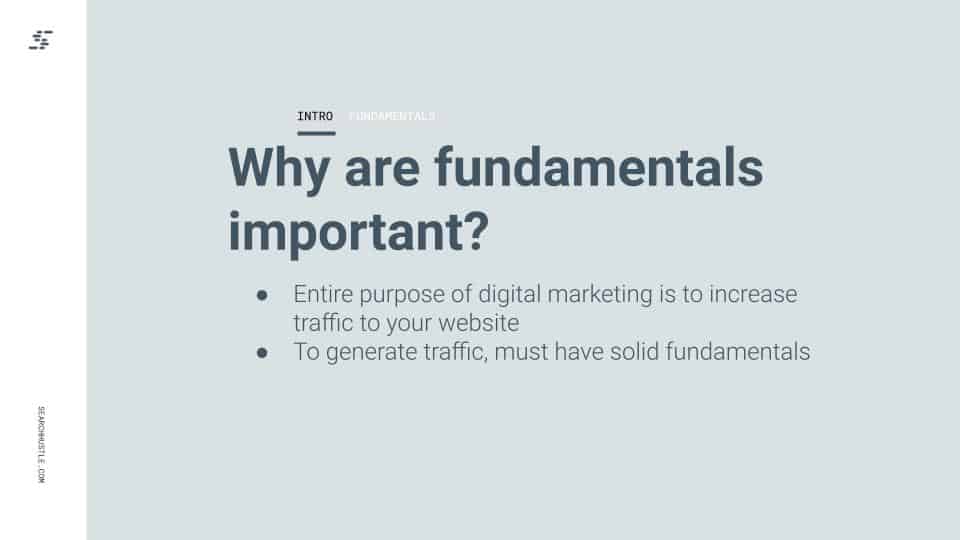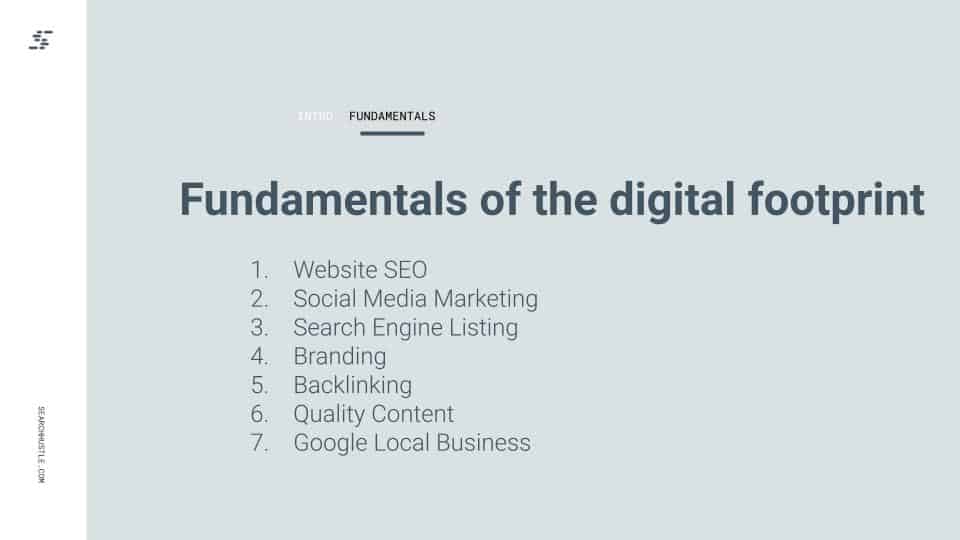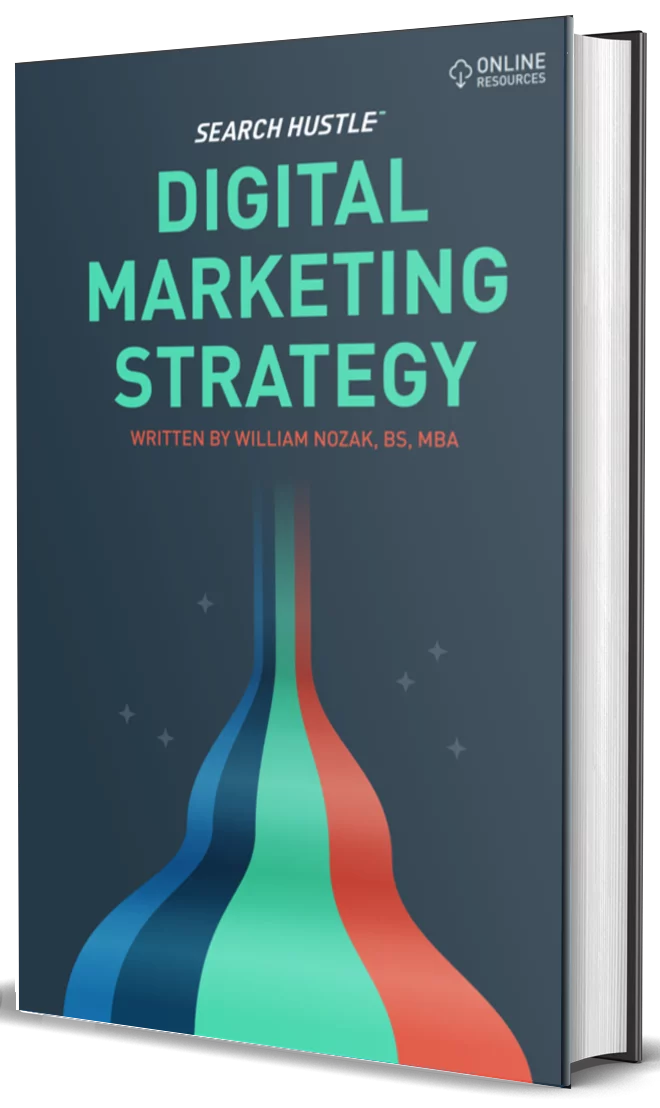Fundamentals of Websites
Ranking high in the SERPs is vital to the success of any business website. The top result receives an average click-through rate (CTR) of 28.5%.
By claiming the first position in the organic results, or at the very least, somewhere in the top five, a business can see a massive uptick in its website’s CTR. However, you don’t have to focus on improving your ranking to see a boost in traffic to your website.
That’s where organic click-through rate optimization comes in.


Why Care About Organic CTR?
The organic CTR of a website is important for a couple of reasons.
First, and the most obvious reason, it means increased traffic to the website. The more traffic a website gets, the more leads and conversions should follow.
Second, it has become increasingly difficult for websites to get their share of clicks. This is partially because Google is always evolving its algorithm and how it displays the SERPs. With new SERP aspects like “featured snippets” and paid ads looking much less like paid ads, organic results have more competition than ever for clicks.
As with most search engine optimization, there is no singular right way. Instead, there are a variety of factors you can tackle that will help to improve the CTR for certain pages.
Here are a few ways you can optimize for organic CTR:
Identify Weak Content
You don’t want to start making website changes without knowing the problem areas. Otherwise, you risk adopting changes that can lower your CTR even more.
Visit Google Search Console for the website and investigate the trend analysis. From there, you will navigate to ‘Performance.’ Once you’re on that page, you will want to make sure that both “Queries” are selected and that you have “Average CTR” checked.
Once you’ve done this, you’ll be able to see what queries or pages are driving the CTR average down. Once you know where the problem lies, you can start solving it.
Use Long-Tail Keywords
Long-tail keywords are phrases of 3 or more words.
Aim to use long-tail keywords in both the title and headings. Users closer to the bottom of the funnel and ready to purchase often use long-tail keywords.
By nature, long-tail keywords are more descriptive. This means they are more accurate at matching search intent to relevant content. When a user sees a long-tail keyword relevant to what they’re searching for, they will be more likely to click on your URL; since they’ll feel confident the website offers the information they need.
Branding
Your website and brand are codependent entities. Your brand can’t survive on its own, and your website can come across as purposeless if you don’t have an effective, worthy brand. The brand can draw people to the website, where they become traffic and then customers of the business.
It is important that this connection is apparent and fluid. It has to be a natural coexistence that doesn’t jar the user. Your brand and its values can be promoted throughout the website. Don’t lose the thread that binds your customers to you.

If multiple pages compete for the same keyword(s), you needlessly spread organic placement among those pages (the algorithm then has to guess the best fit). You should avoid keyword cannibalization and consolidate the content to a more compact single page or page set. Then, set redirects, and eliminate the cannibalizing content.
Keep in mind that Google usually only shows 1 to 2 results from the same domain for a keyword. So, if you have five different pages dedicated to ranking for the same keyword, at least three pages lose out on clicks due to cannibalization.
In short, you don’t want to compete with yourself to rank on Google. Keep a spreadsheet of your content, titles, main keyword, keyword cloud, etc.
Quality Content
No SEO strategy can save a website that has low-quality content. Content is what makes your website and will be what makes you an industry leader. Your content is like your DNA, spreading out from a central source in a web that brings connection and shared interests together.
The more quality content you have, the more visible your website will be. When interacting with your content, the quality of it will determine whether or not a reader becomes a customer. The direct, fundamental impact of quality content cannot be overstated.
Make sure that your website is designed in such a way that highlights the structure and topical authority of your content. Don’t let the content be something that lurks in the background. Let content lead the way. If knowledge is light in the darkness, then the content is the light that shines through the web.
Create Detailed Meta Descriptions
You can also improve your organic CTR by writing effective meta descriptions. Meta descriptions are the brief lines of text below the title tag in the SERPs. On average, pages that include a meta description receive more clicks than pages without a description.
A meta description should detail the page’s content and engage the user so they feel compelled to click on the post. The meta description should not be longer than 160 characters. So, it must be concise, specific, and relevant. Although this is a hard and fast rule, like most SEO rules, they can be bent.
Be Creative With Titles (Meta Title, H1s, H2s)
The meta title is one of the most important aspects of a post because it’s what users primarily see in the SERPs. You can improve the CTR for a title in several ways, such as by including the main keyword. Other header tags, such as H1s and H2s, should also contain the keyword or synonyms.
Try using a numbered list for H2s or H3s. People gravitate toward listicles that lay out important facts (Google loves them). One study found that numbers in a title can boost the CTR by 36%.
Second, you can also implement a question into the title. Question titles have a 14.1% higher click-through rate than titles without a question.
Third, look at utilizing the current calendar year in the title. Including the current year helps to show users that the content is up-to-date and relevant to their queries. After all, nobody wants old news or outdated facts when seeking out information. At a minimum, update the last updated date on the post.
Finally, always be sure to test all headlines. Many free headline analyzers out there will give you a score that estimates its SEO performance.
Use Structured Data
Structured data is a great way to help search engine algorithms process content. Go to Schema.org to convert content into code.
By doing this, search engines have more information to display your content as “rich snippets,” also known as “rich results.” A rich result is more interactive and displays far more detail than a normal snippet.
Having content displayed as a rich result in the SERPs increases CTR because people find the search result more appealing.
Include a Keyword in the URL
Every URL should be customized to be descriptive and use the keyword, if possible. So, optimize the slug each time you create a new page.
After all, people would rather click on searchhustle.com/content-marketing/ instead of searchhustle.com/12345.
Use Images With Posts
Including an image with every post should be common practice. If it isn’t, start doing it.
Including images with content is a great way to boost engagement and improve organic CTRs. An image is also essential if you want any hope of your content appearing as a featured snippet in the SERPs.
When including an image with the post, follow image SEO best practices. That means naming the image as the keyword, adding alt text, and using optimized file sizes.
Increase Site Speed
Site speed is important as a ranking factor. But did you know it can also impact the click-through rate?
If your website is too slow, users might click on your link but quickly bounce off if the site fails to load quickly. In turn, this will have a negative impact on your metrics. Every additional automation you add slows your site down. Your hosting plan is the most important component when it comes to speed, but too many images or images that are too large can have a negative impact even on the best server. So, pay close attention to these items.
Technically Sound
Any marketer knows that website fundamentals begin with technical SEO. The crawlability of your page and the structured data help the search engine better understand your relevance. Appealing to the search engine and being easy for customers to use and navigate can make or break a web presence.
Optimization is a never-ending process that can’t be ignored. As your website, content, internal linking, and link graph change over time, the fundamentals of website SEO will keep your digital presence nimble and accessible. The cornerstone of any digital presence is the ability for customers to find your website and use it effectively.

Ready to Take Your Search Hustle Further?



